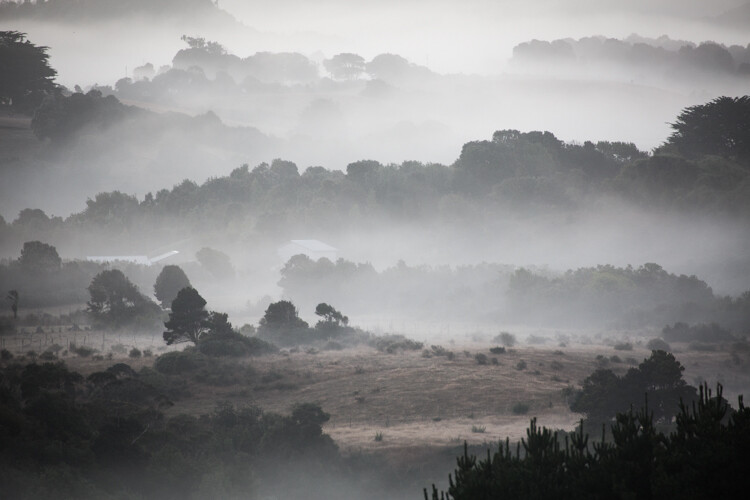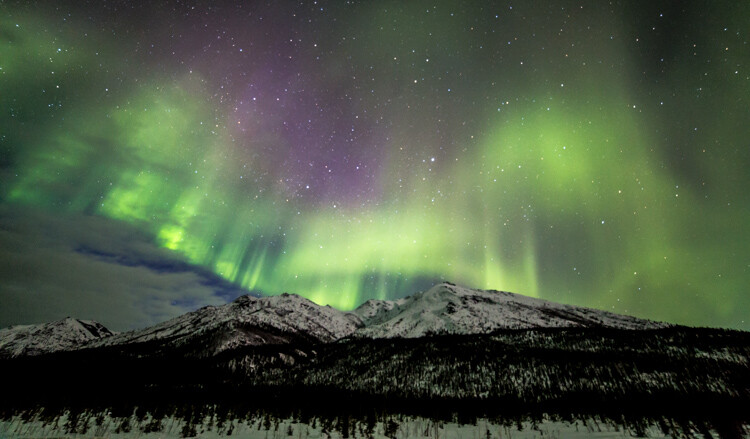How to Plan for a Landscape Photography Adventure

The best landscape photos are rarely created by accident. Yes, sometimes you’ll end up at the perfect spot in the perfect light with all the gear you need, but that is rare. Instead, most beautiful landscape shots come from careful scouting and research (as well as a bit of perseverance).
In this article, I explain how you can plan for a successful landscape photography adventure. I discuss all the key variables – including both weather and seasonality – and I also share an easy method for scouting locations without leaving the comfort of your home.
So whether you’ve got a landscape photoshoot coming up or you’re simply yearning to get outside and shoot, we’ve got you covered!
Table of Contents
1. Think about seasonality

I once got a message from a gentleman who wanted to photograph the northern lights in the mountains of northern Alaska. It’s an area I know well, so I was happy to send along the information he requested – until I realized that he was planning his trip for July.
What’s the problem? The northern lights only come out at night, yet in northern Alaska, the sun never actually sets in midsummer.
Though I laugh about it now, I have to give the guy credit. He contacted me before making his plans, and I was able to set him straight before he bought some expensive plane tickets and ended up on a very disappointing trip to the Arctic.

The lesson? For every location you plan to visit, carefully research the seasonality. Don’t simply choose a time that’s convenient for you and book the tickets; spend time determining the right time to go given your goals, your tolerances, and your interests.
Most parts of the world have cold, wet, dry, or hot seasons, and the success of your photos may depend on the season you choose. It’s also important to think in terms of specifics.
What do I mean by this? Let’s return to my aurora borealis example from earlier. If you want to shoot the northern lights, you’ll need to make your trip during a time of year when it gets dark. But there are better and worse dates between September and April. Arrive in mid-January and you may encounter nighttime temperatures of -40 degrees, which certainly isn’t fun. Additionally, the times around the spring and fall equinox also coincide with the usual peak of auroral activity. And in the spring, there’s less chance of cloud cover.
Bottom line: Spend some time researching the area you plan to photograph. Look at weather charts, look at historical weather trends, talk to other photographers, talk to locals – do whatever you can to understand when you should make the trip.

2. Think about the time of day and the sun’s position
This is an essential part of landscape photography planning, yet it often goes overlooked. Most landscape photographers are happiest during the golden hours. The light is low and sweet, and it throws long shadows across the terrain.
But when do the golden hours actually take place? That depends on the location and time of year. In Alaska in midsummer, for instance, you’ll get golden-hour light in the middle of the night.
So before you head out for that beautiful golden-hour photoshoot, check the sunrise or sunset times. Then plan accordingly. You can find this information on the internet, though there are also plenty of handy smartphone apps that will give you all the data you need (and more).

You should also consider the position of your chosen subject and how it will be illuminated. A mountain will be lit from one side in the morning and another side in the evening. If you don’t plan accordingly, you might end up at a prime sunset location at sunrise or a prime sunrise location at sunset. More than once, I’ve headed out for an evening landscape photoshoot only to find my subject draped in bland, gray shadows. If I had planned more carefully, I could’ve captured my photos at sunrise instead!

Look at maps, see where your subjects are situated, and keep in mind the position of the sun and how it’ll change over the course of the day.
3. Don’t forget to check the weather

While weather forecasts are often wrong, and while it’s tough to use weather predictions more than a few days in advance, I still recommend you check a weather app a few days before you plan to head out, then the night before, then just before the shoot.
In truth, landscape photography in bad weather can look amazing, so you don’t necessarily need to put a trip on hold simply because the weather is cold, rainy, snowy, or a combination of the three. But it pays to be prepared, and by paying attention to the forecast, you may be able to moderate your expectations or plan around any undesirable weather.
My aurora borealis photography trips are perfect examples of this. If the weather predicts clouds in one area but clearer skies in another location, I’ll head to the area where the skies are clear; clouds are bad when it comes to astral photography, but the weather isn’t uniform across a big landscape!
By paying attention to weather forecasts and conditions, you can adjust your location or – if the weather is difficult enough – change dates.
4. Spend some time scouting the location in advance
Once you arrive on-site, it’s never a bad idea to go for a hike or drive and identify the good scenic compositions before the sweet light of the evening hits. You might consider bringing a camera (so you can check different shots through the viewfinder), though a smartphone can work very nicely, too.
Note that you can scout a few hours in advance, but if you have the time, you should consider spending a day or two scouting before you start shooting. Remember that harsh midday light is rarely good for landscape photography, but it’s just fine for scouting, so it’s a great way to spend your time.
Sadly, life can often get in the way of scouting, which is why many landscape photographers only show up just as the light is getting good. If that sounds familiar, don’t fret; there’s a digital solution that can help!
You see, using Google Earth and Google Maps, you can check out the places you want to shoot, get driving times, and even use the street-view function to get an idea of how the landscape will look from the ground. Thanks to these tools, I’ve actually managed to find exact spots and compositions for images I hoped to make.

5. Talk to others
The internet is full of information, and a few well-worded searches will give you much of what you need to know. But the internet will never be better than personal experience.
So once you have a location in mind, reach out to photographers familiar with the area. Social media is a great way to find shooters who know everything about specific destinations. Once you identify a few folks who can help, it’s a simple matter of sending some questions via email or a message. It’s extremely rare that someone isn’t willing to share what they know, provide advice, and point you in the right direction.
(Reaching out to other photographers can also be a great way to make friends – you might even consider spending a day shooting together!)
Planning a landscape photo adventure: final words

Hopefully, you found this article helpful, and you’re ready to start planning a trip (or five!).
Just remember to consider your photographic goals for the location you hope to shoot, then do your research. Ask the right questions to the right people, and you’ll have a much better chance of success when you arrive with your camera.
Now over to you:
Do you have any landscape photography scouting or planning tips that I missed? Where do you hope to photograph next? Share your thoughts in the comments below!




